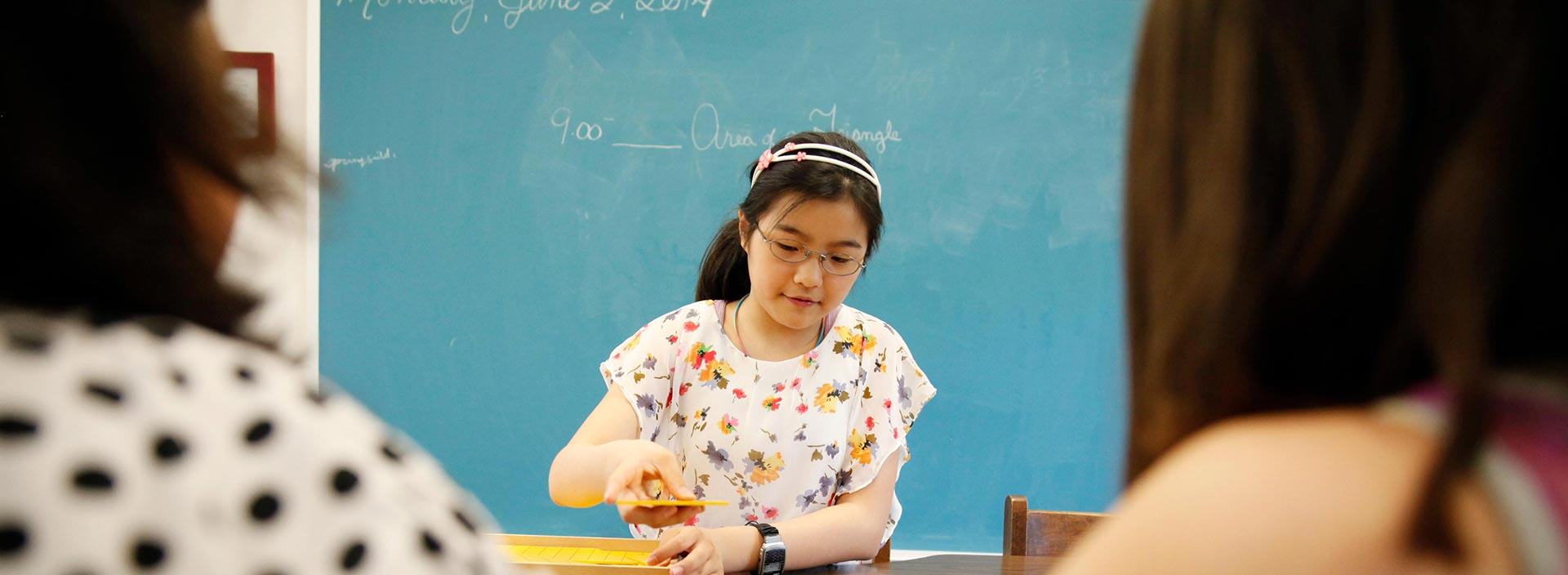
Countryside FAQs
Why should you choose Countryside Day for your child?
Countryside Day School understands education in a deeper and more complex way than conventional education. At CDS, we balance the highest academic rigor with the development of critical qualities of character. Education can no longer simply transmit academic content. CDS gives students an educational experience that allows them to “practice life” in classrooms that are micro-communities that emulate real life. Every day is different. Every day presents new opportunities and new challenges. Students are constantly learning how to manage their time, collaborate with peers, initiate tasks on their own, complete works independently, pursue academic interests, and dive deep in learning across curriculum areas. A Countryside Day Education is qualitatively different than other educational programs. You can find out more about these differences by browsing the website. But only a visit to the campus will reveal to you the magnitude and depth of the CDS experience.
What does Countryside have to offer that my child can’t get at other schools?
Countryside Day’s approach to education is unique. You will see that the minute you walk into one of our classrooms. The materials used to teach reading, writing, arithmetic, geography, science, music, social studies are all unique to the Montessori classroom. The classroom materials used for our youngest students take abstract ideas and put them in a concrete form that makes sense to these developing minds. Students learn to learn from their peers, and respect their own and each other’s ability to be a teacher as well as a student. Finally, our teachers have caring and personal relationships with each their students which allows them to have the role not only of the teacher of academic content but also the role of mentor, guiding students as they develop their character: stepping in when direction is needed, stepping back and giving space for independent achievement, and careful observation to know exactly when to intervene.
How do you make the classrooms so peaceful?
It is our primary goal to help the children develop the qualities of respect, responsibility, and resourcefulness. This guides every decision we make. If children are not behaving responsibly they are held accountable for their actions. But most notably, Montessori believed, as do we, that this peaceful and self-directed student is the true student. If children are in an environment of respect and are expected to act respectfully they will follow suit.
Why do you have mixed age groups?
If you want children to become responsible young adults they must have opportunities to practice both personal and social responsibility at a young age. A mixed age group allows children of different ages and abilities to help each other and thus learn responsibility. In a mixed age class it is not always the teacher who solves problems. In fact more often it is not. Instead it is another student. This is not possible in a class with students all of the same age and abilities. Since no two students grow and mature in exactly the same way the materials available to the students are varied and numerous. The proper activity for the right moment is there to be introduced to the student when he is ready or when chosen by him as his interests dictate. Thus, no student is held back if his skills indicate a need to move on, nor is a student pressured to keep pace with skills he is not yet ready to master. The sensitive periods of each student can be capitalized upon in a multi-age classroom.
How do you approach discipline?
It is our goal to have children internalize good behavior, not just respond to an adult. To do this we again are focused on respect, responsibility and resourcefulness. But students do not come to us with all of these qualities in place. When a student behaves in a manner that is unacceptable he is held accountable with a logical consequence, one that is related to the misbehavior.
For example, if a student chooses a particular material and is using it incorrectly, perhaps even damaging it, he will at first be redirected to use it appropriately. If this does not remedy the problem the student will be told to put the material away and may not be able to use it again for several days.
We do not use time outs. If a student is consistently running in the class endangering himself and others, he might be asked to stay with the teacher or to stay seated at a table. But this problem was related to movement, thus the consequence is the restriction of movement. This is not the same as the notion of a time out. The premise that guides teachers in working with students is that they are each afforded the amount of freedom that allows them to be successful. When they are not successful, that freedom is narrowed. But the goal is always to have the student regain that freedom because it is the best preparation for adult life.
Why five days per week?
If you want children to develop the qualities of respect, responsibility and resourcefulness they need consistency. They need many opportunities to practice. If they are only coming a few days per week, they do not really feel the classroom is their own. They are only partially attached, and therefore do not develop a strong desire to be responsible for it.
How do the children know what to do when?
On a student’s first days of school he is given several lessons each day. Once given a lesson a student may choose that material without asking permission. The materials in a Montessori classroom were initially chosen by trial and error. Only those most interesting to the students were kept in the classrooms. So the students are naturally attracted to what is here. If, however, a student is not working in a particular area, for instance writing, this would be observed by the teacher and she would direct that the student take out writing work. It is not just a “do whatever you want” environment. Fortunately, most often the students are productively self-directed. But when they are not, the teacher is there to step in and give clear and direct instruction.
What is the student/teacher ratio?
Toddler: 1:5
Pre-K/K: 1:15
Elementary: 1:15
These ratios, however, are not the most important question. It is actually the teaching ratio that is what defines the CDS Experience. During the Early Childhood years, teachers are giving direct instruction almost always in a 1 to 1 ratio. At the Elementary level, teachers are giving direct instruction to in groups most often in groups of 1 to 6-8. Teachers are rarely trying to teach the entire class at the same time. While a teacher is teaching, the rest of the students are diligently working on concepts that they have been introduced to but have not yet mastered. This approach allows students to follow interests and work on concepts when they feel most excited about them. It also allows teachers to be constantly assessing student mastery in informal ways.
Why do students at CDS have less homework than conventional schools?
The classroom environments at CDS inspire students not just to learn — but rather to love learning. The teachers are passionate which infects the students with interest. Curriculum is not pre-determined day to day, so students are allowed to explore their interests in real time, not three hours later in their bedrooms at their desks (when their interest is long gone and their thoughts are distracted by the many other things they would rather be doing).
The students at CDS are granted the freedom to work on the subjects that inspire them at the time that inspiration is born. Their interests are peaked by the many different works going on around them in the classroom. The joy of collaborative work is irresistible. With this, there is no limit to what they can learn.
Students do receive minimal amounts of homework starting in the Elementary Program. It increases as the students get older. Students are not just listening to direct instruction during the course of their day. They are also working on the concepts they have been introduced to, so the need to bring home much of the work is eliminated.
Why are the children in the older grades (1st – 6th) not assigned grades and report cards?
For the budding student this is the surest way to limit inspiration and retard the development of self-assessment. The joy for CDS students is in the learning itself. They are working and acquiring knowledge because they are excited by the possibility of how far they can pursue any interest.
Rather than grade the students on how well they learned the countries of North America, after which it is clear there is no reason to go on, CDS students continue on to learning the countries of South America, Europe, Asia, and on and on. They ask for the opportunity to evaluate their own knowledge by testing themselves or making presentations to their classmates.
The teachers are in continuous contact with each student offering honest reflections and soliciting discussion about whether he or she is working up to potential. Each student asks himself: “How much can I do?” (Not, “How much do I have to do?”) And, “How well have I done it?” (Not, “Was it good enough for an A?”) This sense of personal responsibility is the preparation necessary for the competitive 21st century.
Get the bigger picture.
Come visit our beautiful campus.
Our admissions director Karen is ready to schedule your tour and a class observation. Countryside offers open enrollment. Families can apply for admission any time of year.


